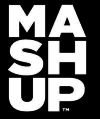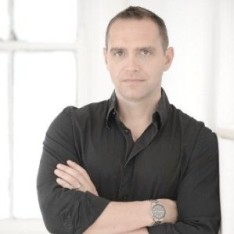Start-up consultancy Mash Up swallowed by Deloitte amid plan to ‘fuse’ customer journey
 Mana
Mana gement consultancy Deloitte Digital is continuing its expansion into the marketing field acquiring consumer retail specialists Mash Up.
gement consultancy Deloitte Digital is continuing its expansion into the marketing field acquiring consumer retail specialists Mash Up.
The move is the latest acquisition by Deloitte as it looks to ramp up its marketing offering to customers, with in-store experience becoming an increasingly important part of the retail puzzle.
Mash Up founder Robbie Robertson told Mumbrella that far from closing down, retail stores were experiencing a “renaissance” as more businesses looked to merge their physical and digital offerings.
Under the terms of the deal the Mash Up name will disappear with ten staff merging into the existing Deloitte Digital offering, with Robertson becoming a partner. Deloitte Digital partner and board member Katherine Milesi described Mash Up as possessing “very specialist skills” in terms of its physical store knowledge “which would have taken a long time” for Deloitte to have to developed organically.
For Mash Up, which Robertson founded 18 months ago, it provides the opportunity to work on “larger, complex projects”.
Robertson said the merged entity will aim to provide a “fusion” of offline and online consumer interactions with a company or brand.
Too often an online or social experience with a brand bears little resemblance to that of the physical one, he said.
“Consumers may have an experience digitally with a brand or on their iPhone which was good, fun and interactive but the in-store experience just doesn’t convey the same message,” he explained. “It doesn’t feel like it’s part of the same journey and you have a disconnect.
“We help to understand exactly what those disconnects are try to make sure a fusion occurs.”
A starting point is understanding what communication channels a company needs to have a presence in, Mash Up experience consultant Nicola Mansfield said.
She said brands often become “overwhelmed” by the sheer number of channels and wrongly believe they must have a presence in many.
“By starting the process of getting a real in-depth understanding of consumers, we start to realise that customers don’t need to be communicated with in 115 channels,” she said. “There are often five that deliver maximum results.”
Milesi said: “It’s potentially a bamboozling problem for companies. They have age old traditional methods of interacting with their consumers and the number of ways they can do that has now exploded.
“They need to understand what their customer journeys are, but doing that in a manual way could take forever, so that’s where the beauty of analytics and sophisticated software comes. You can develop a profile and segment a customer now in such a precise way that you have never been able to do before.”
Internal silos within organisations remain the major barrier , she said, with a lack of co-ordination between departments holding back progress.
She called for a “fundamental re-think” in the way organisations are structured and stressed such change “takes vision from the top”.
While understanding the complex web of digital and social engagement was vital, the role of the physical store also remains central to the “customer journey”, Robertson said.
Research by Deloitte Digital claims that four out of 10 shop visits are “influenced” by digital through either visiting a website or using social media.
The consultancy giant said retailers must lose the mindset where online is considered a lower-margin and distinct sales channel and regard it as “blending with and complementing traditional channels”.
“Digital is becoming an integral part of the in-store shopping experience,” a Deloittoe report said. “Australian retailers need to understand how to harness its influence to increase conversion rates and order sizes.”
Robertson told Mumbrella the physical store is as important as it has ever been to customers, with people fundamentally wanting to feel and touch product. What is changing is the appearance of those stores, he said.
“Five years ago there were all these doomsday scenarios that the high street was dead, shops would be boarded up and tumbleweed would be blowing down the street,” he said. “What we have seen in the complete opposite. We have seen a renaissance of the physical environment and it’s being driven by digital.”
Such is today’s technology with beacons and smart phones, stores are able to personalise visits, including in-store digital ads targeted at specific customers.
“It sounds a little Minority Report but that’s here today,” Robertson said. “The fusion between digital and physical has given the old traditional retailer a new lease of life. It means visits to physical stores are more meaningful and deeper and the the reasons for coming in are experiential.”
Milesi said increasing numbers of retailers are re-evaluating their store networks and moving away from a template strategy to one where they analyse what sort of store is required based on location and demographic.
Companies are more closely exploring how their physical locations – described by Milesi as “very expensive balance sheet items” – can be better utilised and what different experiences they can offer consumers.
Robertson also said stores are learning to offer deeper experiences in way they are unable to online but in a way that connects with the digital experience.
“Physical stores are becoming more innovative, theatrical and fun. I think the physical retail store has a very bright future and the high street will be here in 100 years,” he said.
Steve Jones






Nice one Robbie!
User ID not verified.
Congrats Robbie
User ID not verified.
Congratulations Rob.
User ID not verified.